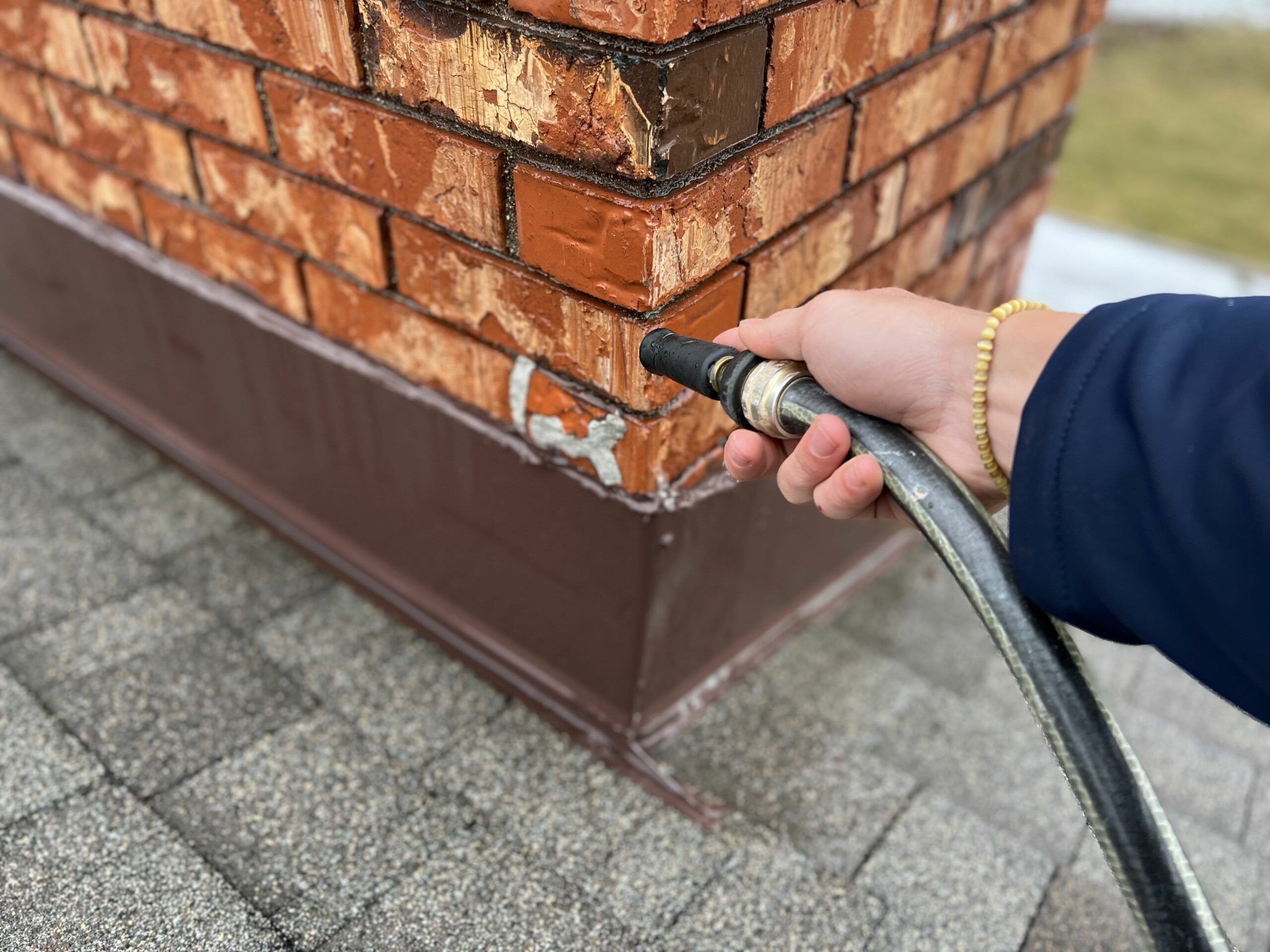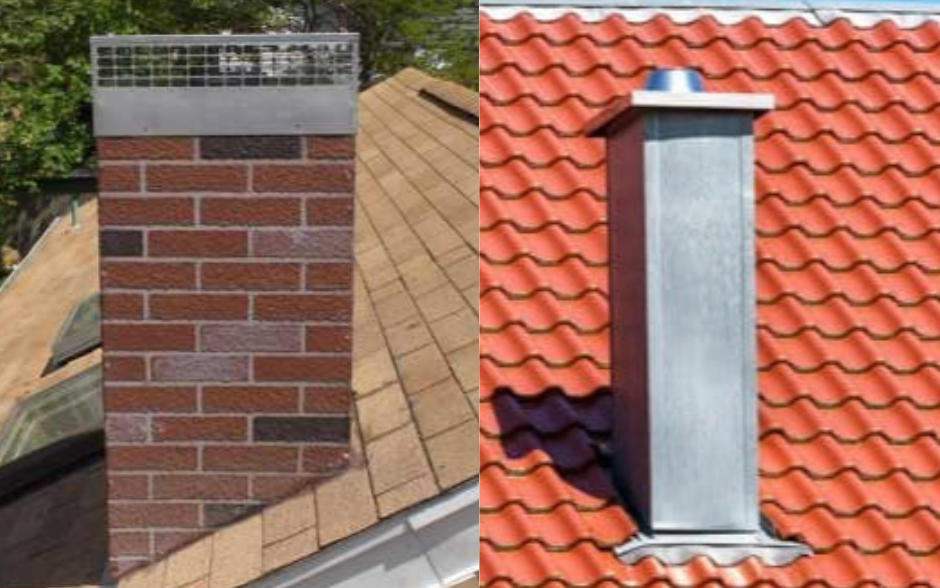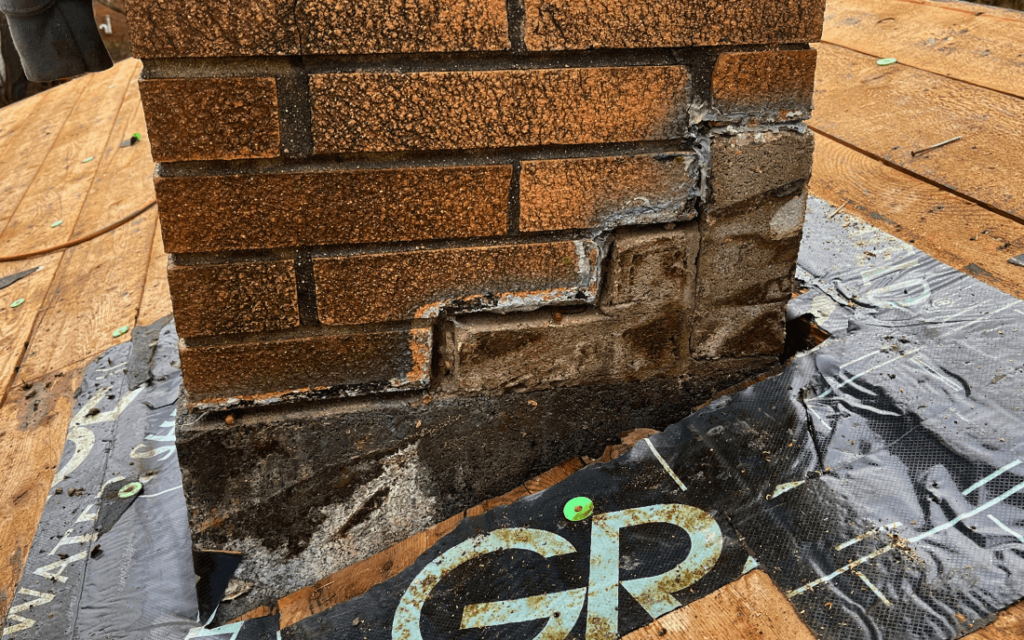
Chimneys are vertical structures that are frequently seen on rooftops and offer a pathway for smoke, gases, and other combustion byproducts to exit a building. In the development of architecture and household heating, chimneys have been significant. For ages, they have been utilized in buildings for heating, cooking, and ventilation. They evolved into enduring icons of comfortable residences.
The main purpose of a roof chimney is to provide an airflow or draft that expels gases and smoke from a structure. This enhances indoor air quality by assisting in the removal of harmful substances like carbon monoxide.
These roof chimneys may be durable, but they are also vulnerable to problems and damage. These issues might result in water leaks and serious harm to the structure of your home. So, how would you know if it is leaking?
This post will give essential information on how to check for chimney problems and outline the key parts of the chimney that might be the cause of the problem.
The main components of a typical roof chimney include the chimney stack, flashing, bricks, grout, and chimney cap. Together, these parts make sure that a chimney operates safely and effectively, allowing for the correct venting of combustion gases and the removal of smoke and pollutants from the structure.
1. Chimney Stack: The part that is vertical and rises over the roofline is known as the chimney stack. In addition to providing the correct airflow, it also helps release the combustion gases into the atmosphere.
2. Flashing: The base of the chimney is fixed with flashing, which is a waterproof material. It is often composed of metal, like aluminum or copper, where it meets the roof. It aids in maintaining a watertight seal and stops water from entering the structure at the junction.
3. Bricks or Masonry: Typically, bricks or other masonry materials are used to build these structures. Bricks are piled and mortared together to create the chimney's walls. Roof chimneys made of masonry materials are not only durable but temperature-resistant as well.
4. Grout or Mortar: Mortar, commonly referred to as grout, is a substance used to bind bricks or other masonry units together. It is made of cement, sand, and water. It offers structural stability and aids in sealing any gaps between the bricks, keeping combustion gases from escaping.
5. Chimney Cap: The chimney cap is an enclosure or protective covering that rests above the roof chimney stack. It protects against animal access, prevents downdrafts, and keeps snow, rain, and debris out among other things.
One of the typical places where leaks might happen is the chimney flashing. Either the counter flashing is badly installed or the step flashings underneath the counter flashings are badly lodged.
Water intrusion into the structure may result from improper flashing installation or damage to the flashing. There are two primary forms of flashing: step flashing and counter flashing.
Step flashing is put between the roof chimney and individual courses of shingles. To produce a waterproof barrier, it arranges a succession of overlapping phases. Step flashing can enable water to leak into the structure if it is not built correctly or if it gets damaged. On the other hand, counter flashing is laid over the step flashing and is often constructed of metal. It is included in the roof chimney's masonry joints to provide a waterproof barrier. Water may enter the chimney system if the counter flashing is placed incorrectly or degrades over time.
It is always important to look for any damage when leaks occur, such as cracks, gaps, or separation from the chimney or roof, on the counter flashing as well as the step flashing. The sturdiness of the chimney and surrounding structure can be preserved by rapidly addressing these problems by repairing or replacing the flashing.
If the flashing is not the problem, then you may have to look at the chimney cap. As mentioned earlier, the cap is an enclosure or protective covering that rests above the chimney stack.
Water leaks might result from a broken or incorrectly placed chimney cap that allows water to enter the chimney system. In addition, a damaged or blocked chimney may result from debris, animals, or birds entering it through a missing or insufficient roof chimney cover.
Look for any evidence of deterioration, such as cracks, corrosion, or missing pieces, on the chimney cap. Make sure it is adequately covering the aperture and is firmly fastened to the chimney stack. It can be required to fix or replace the chimney cap if you think that it is the source of the leak.

Your choice of material for your roof chimney may be influenced by a number of factors. These factors may include particular needs, requirements for construction, budget, personal preferences for design, and the laws of the area. Chimneys can be constructed using various materials, but two of the most common options are concrete and metal.
1. Concrete Chimneys: These chimneys are usually made of poured concrete or reinforced concrete blocks. The best things about these types are that they offer sturdiness and stability, and they can survive extreme weather conditions. Concrete chimneys are oftentimes constructed on the spot, allowing for modification to meet certain architectural needs and preferences.
2. Metal Chimneys: These are commonly referred to as prefabricated or factory-built chimneys, and are constructed of metal parts that are simple to assemble. They are made of materials like galvanized steel or stainless steel. They are manufactured in advance at a factory and then pitched on location. They have benefits including lower weight, simplicity in installation, and adaptability to different building styles. Both residential and commercial applications frequently employ metal chimneys.
One of the ways to know the root cause of the problem is to check where the water is coming from. Is it inside or outside the roof chimney?
As we already know, the chimney cap serves as a protective barrier on top of the chimney stack, and if water is entering the inside of the chimney, it is indeed possible that the chimney cap could be the source of the issue. A damaged, improperly installed, or missing chimney cap can allow water to enter the chimney system and lead to water infiltration inside the chimney.
It is important to check the chimney cap for any indications of damage or misalignment in order to identify whether the cap is the source of the water infiltration. You might want to check for any gaps between the cap and the chimney as well as any fractures, corrosion, or missing pieces. Additionally, look to see if there is any water accumulating on the cap's top, which may be a problem as well.
Water entering the roof chimney from the outside frequently points to a flashing issue. The elements that provide a watertight seal between the chimney and the roof are the flashings.
Damaged, incorrectly placed, or deteriorated flashings may enable water to enter the chimney system and lead to leaks. Some of the common problems include flashings that are broken or missing, detached from the chimney or roof, or have gaps between them and the roof chimney.
You might want to inspect your flashing for cracks, gaps, or loose pieces, just like you would the chimney cap. To create a watertight seal around the chimney and stop water from entering the structure, proper flashing installation and maintenance are essential. The sturdiness of the chimney system may be maintained, and future damage can be avoided with routine inspections and prompt repairs.
The amount of water dripping or flowing down the roof chimney might give some indication of the location and extent of the leak. These different situations may help in determining the most probable cause:
1. Heavy Water Flow: When there is a lot of water streaming down the chimney, there is usually a more serious problem. This could point to an issue with the chimney cap, broken or absent flashings, or even masonry fractures. In such situations, it's essential to fix the problem immediately in order to prevent more water damage.
2. Slow Dripping: Water slowly seeping or dripping from the chimney is frequently a sign of a localised problem. This might be caused by a particularly broken flashing, a little breach in the masonry, or a slight problem with the chimney top. Even though slower leaking may indicate a less serious issue, the source of the leak must be found and fixed in order to prevent any long-term harm.
It's possible that a leak won't always be obvious, but you could detect water stains on the walls or ceiling close to the chimney. This may be a sign of a concealed leak in the chimney construction or an issue with the flashing, which would let water enter and subsequently move within the walls or ceilings.

Now that you know how to check for roof chimney problems on your roof, you can prevent any future leaks or damage to your home. Proper maintenance and knowing where and how to check will surely help you a lot.
Though you may be knowledgeable enough to identify potential problems and how to check for them, it's always a good idea to have a competent chimney expert or roofing contractor properly inspect your chimney and make any necessary repairs. They may assess the problem, identify the specific source of the leak, and provide the necessary modifications or recommendations in order to preserve the chimney's efficient operation and prevent water damage.